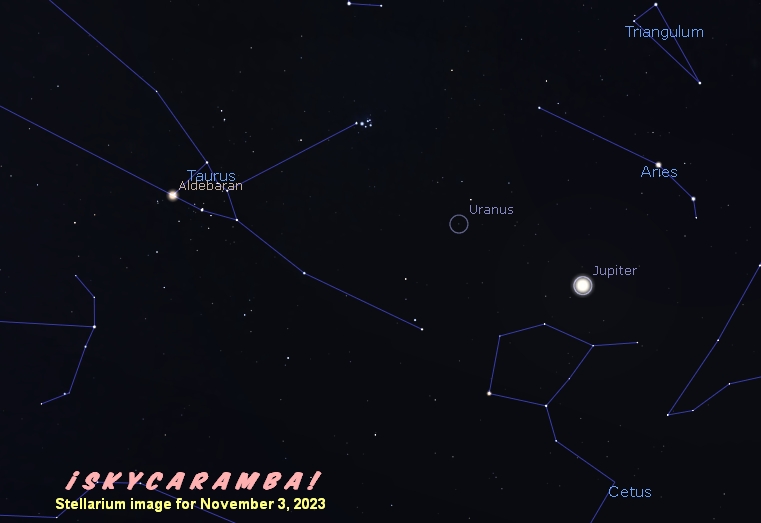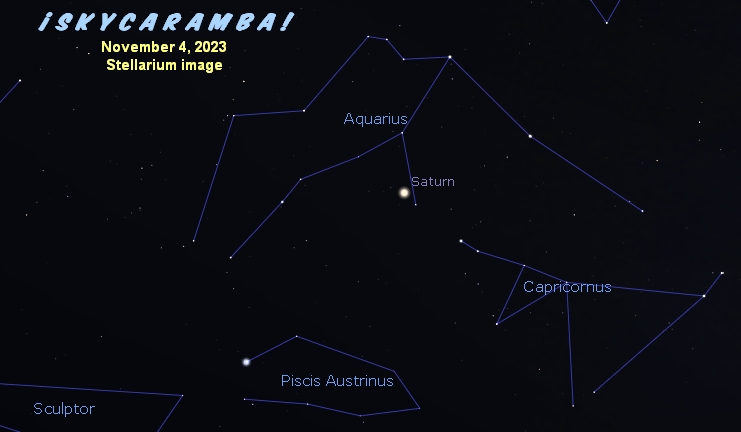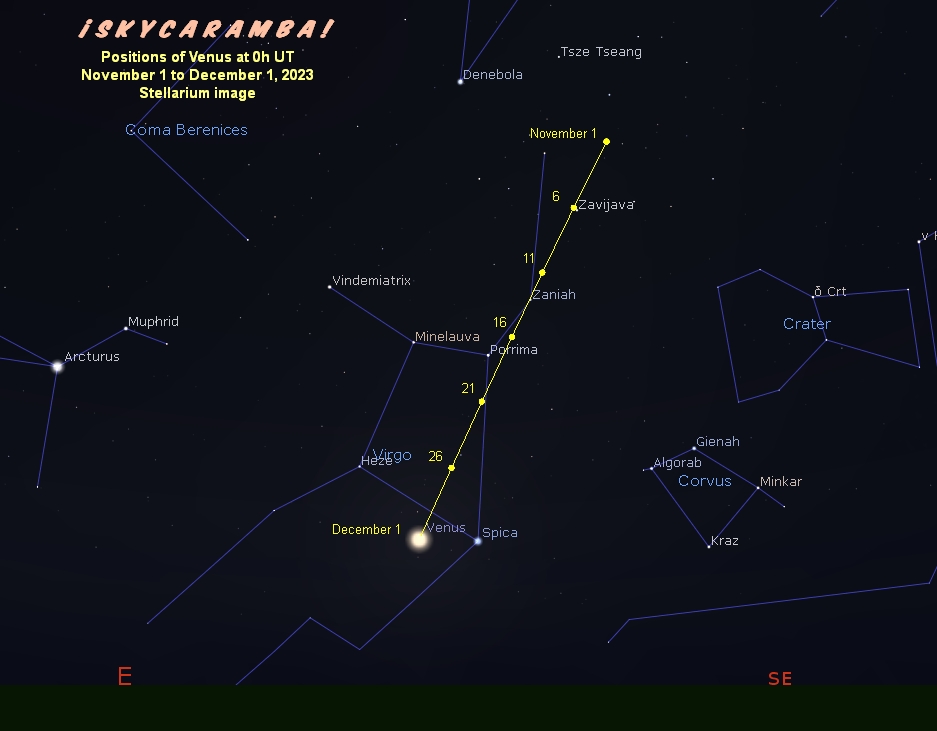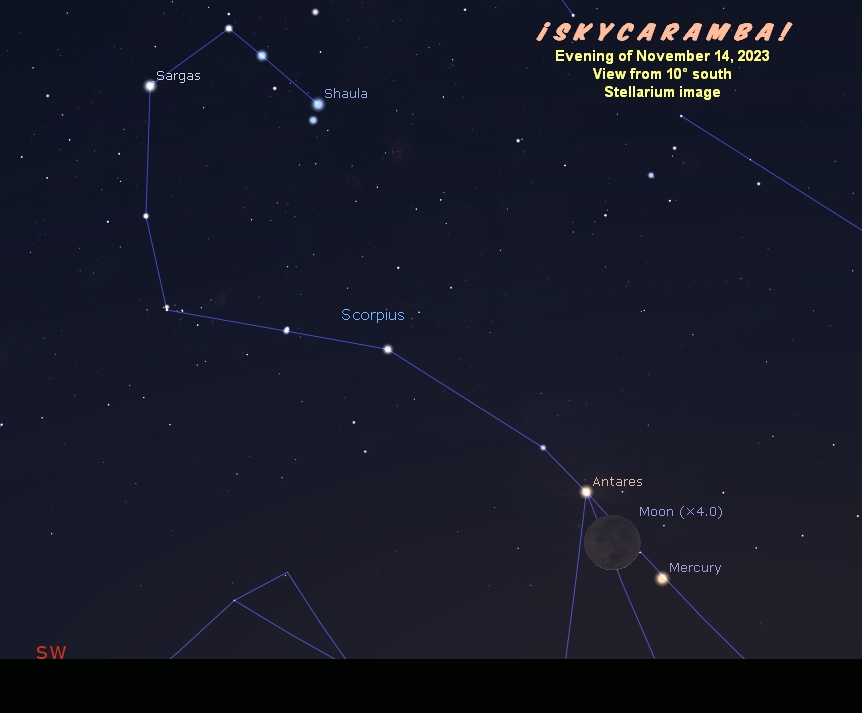This month starts with a waning gibbous moon approaching lunistice. The moon will be 28.3° north on the 2nd. See it from late evening until it sets in the daytime.

Jupiter’s at opposition on the 3rd at slightly less than four astronomical units from us. The early part of this month is a great time to see the planet in a telescope, because we get a relatively close view and the planet’s up all night. Jupiter’s at opposition every 13 months. Last year’s Jupiter opposition began a 12-year cycle during which oppositions are getting farther from us. After 2029, the oppositions will get closer again.

Saturn’s stationary in Aquarius. Of course, you know it’s not really holding still. But it looks like it is to the naked eye. The planet has been retrograde and resumes direct motion on the 4th. The planet’s near a 4th magnitude star named Iota Aquarii. It’s actually a double star 175 light years away. Studies of this star from 2009 to 2016 revealed a binary observable by very careful measurements of the distant dot’s motion and spectral changes. The ringed planet’s high in the east as darkness begins, so you get to see it most of the night.
The moon reaches last quarter on the 5th. Then it’s at apogee, 404,500 kilometers away, on the 6th. So the moon becomes a morning object. Evening object Mercury is at aphelion that day, 0.47 astronomical units from the sun in reality but not far enough from the sun in our sky to see.

In our morning sky during this time, Venus continues shining ever brightly while moving eastward from beneath Leo the lion. The planet was at greatest elongation in late October and remains nicely positioned for splendid viewing all month. In fact, its angular distance from the sun barely shrinks all month from 46° to 43°. The planet crosses the boundary from Leo to Virgo on the 2nd. The planet passes by Zaniah around the 5th. Venus is approaching the star Zaniah when the moon passes by on the 9th. The moon is going south over the equator on that day.
Venus passes Zaniah on the 13th. The moon is new on that day. And Uranus is at opposition. So it’s that planet’s turn to be seen all night at its closest. It’s 18.6 astronomical units from us and appears as a blue-green dot in a telescope. Its oppositions are presently getting closer.

If you can spot the thin, young, crescent moon in the evening on the 14th, try to see Antares nearby. For another challenge, try to see Mercury. If you’re at or close to 10° south latitude, you have a good chance of seeing all of them. Farther from these latitudes, they may be lost in the twilight. The moon will be easier to see two nights later when it sets later and is 28.3° south.
The most famous November meteor shower is the Leonids. It could peak on the 18th. Since the moon sets in the evening and Leo’s a morning constellation, we have a good chance at seeing perhaps 15 meteors per hour.
Venus’s trek through Virgo takes it by Porrima on the 17th. Meanwhile, in the evening, the moon passes by Saturn on the 20th. The moon’s at perigee the next day at 369,800 kilometers away. It’ll cross the equator northward on the 23rd. Then the moon’s close to Jupiter on the 25th. And the moon’s full on the 27th.
In the morning, Venus continues crossing Virgo and passes near Spica in the last days of the month. While still far from the sun from our perspective, the planet’s at perihelion on the 28th. It’s 0.72 astronomical units from the sun.
We have a second northern lunistice at 28.2° on the 28th. Venus’s appulse with Spica is the next day.
